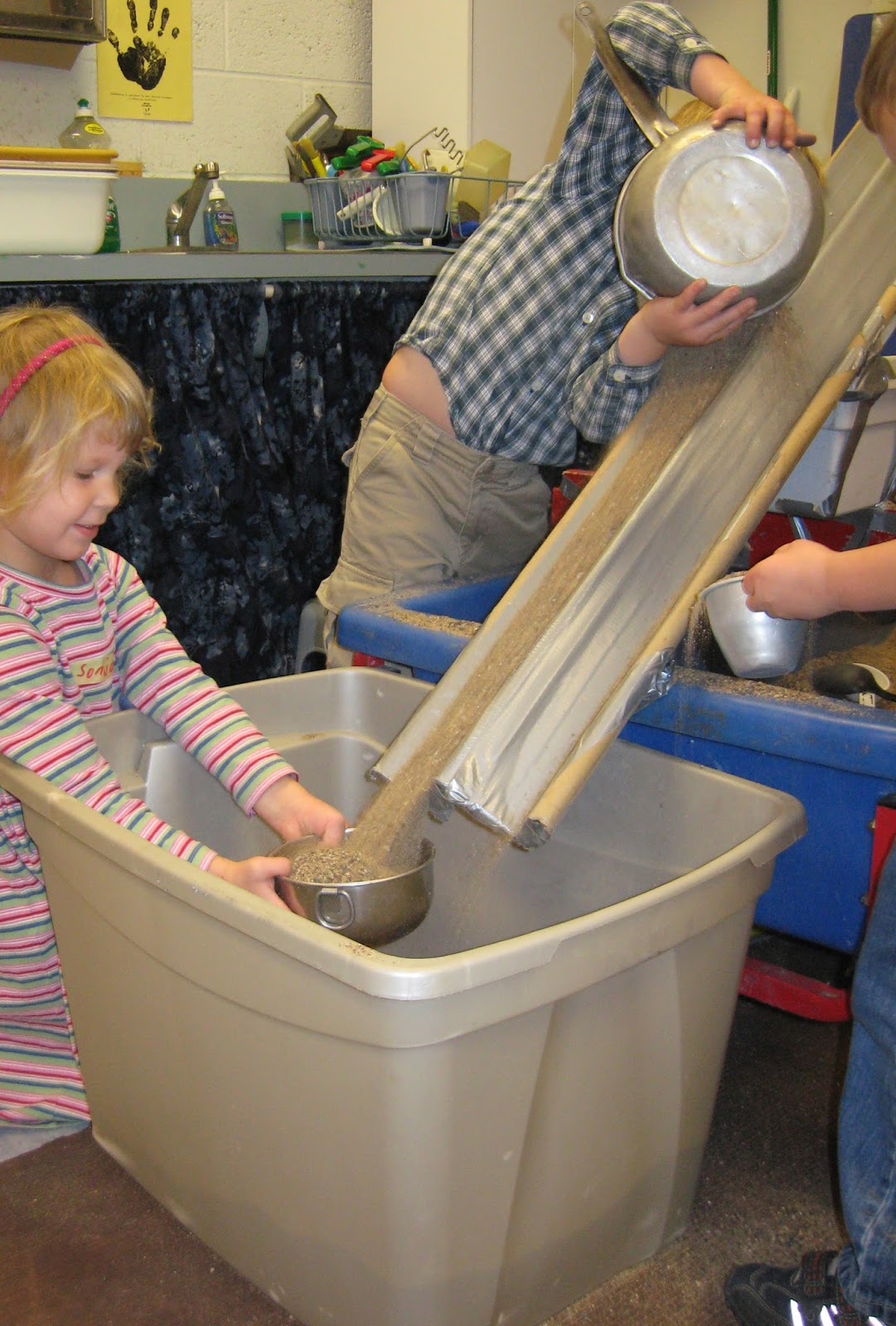Now let me give you a little idea about how my mind works. After looking at the packing corners for a week, a childhood memory popped into my head. When I was five or so, my parents remodeled the bathroom in our house. As part of the remodeling, the bathroom floor was raised about two inches creating a small ramp from the bathroom floor to the hallway floor. I used that little ramp for rolling cars and marbles down for hours on end.
Because of that memory, I decided to tape the packing corners together and set them on an incline. It was a very simple arrangement. I did not know how the children would use it. Silly me, there was no need to worry because they knew exactly what to do with the inclines just like I did so many years ago with a small incline.
But how did they know what to do? And why was I fascinated so many years ago by a small incline? Was it a sense of agency of setting things in motion and seeing what happens?
As the children continued to play with the inclines, they taught me a couple of things. One of the first things they taught me was that an incline can connect children in their operations. Below is a picture of two children connected by the incline. The boy is pouring sand down and the girl is catching it at the bottom.
This play actually had a trajectory because the boy kept pouring more sand down faster. The result was that the force of the sand was so great that it knocked the bowl right out of the girl's hand. You want to know how these two reacted to this joint venture? With great delight.
Not only do an inclines connect children in play, they also create a continuum of levels. That is important because children can enter play at any level along the continuum. Below you see a picture of four children, each at a different level on the continuum of the incline. They are creating a cascade of pellets by each taking turns blocking the pellets as they flow down the incline.
That takes a fair amount of cooperation and coordination, but all made possible by the continuum. Do they know it is a continuum? I don't think so, but because of their play, we can see the continuum of levels quite clearly.
They taught me one final thing about the incline: there is great joy in rolling things down the incline.
Play with the incline does not get much better than this? Feel the joy!





Tom,
ReplyDeleteDo you control the angle of the inclined planes or are the children able to change the angle? My master's degree is in Early Childhood Ed. so I'm always thinking about the science involved in sensory exploration. Inclined planes are a wonderful way for children to explore physics and I like to give them the opportunity to explore what happens when they move one end of a ramp up or down.
Jen, The apparatus as set up does not allow for the children to change the incline. I would love to see how you do it. Please share. You have an interesting perspective thinking about science around sensory exploration. For me, the sensory table is a hands-on science table.
Delete